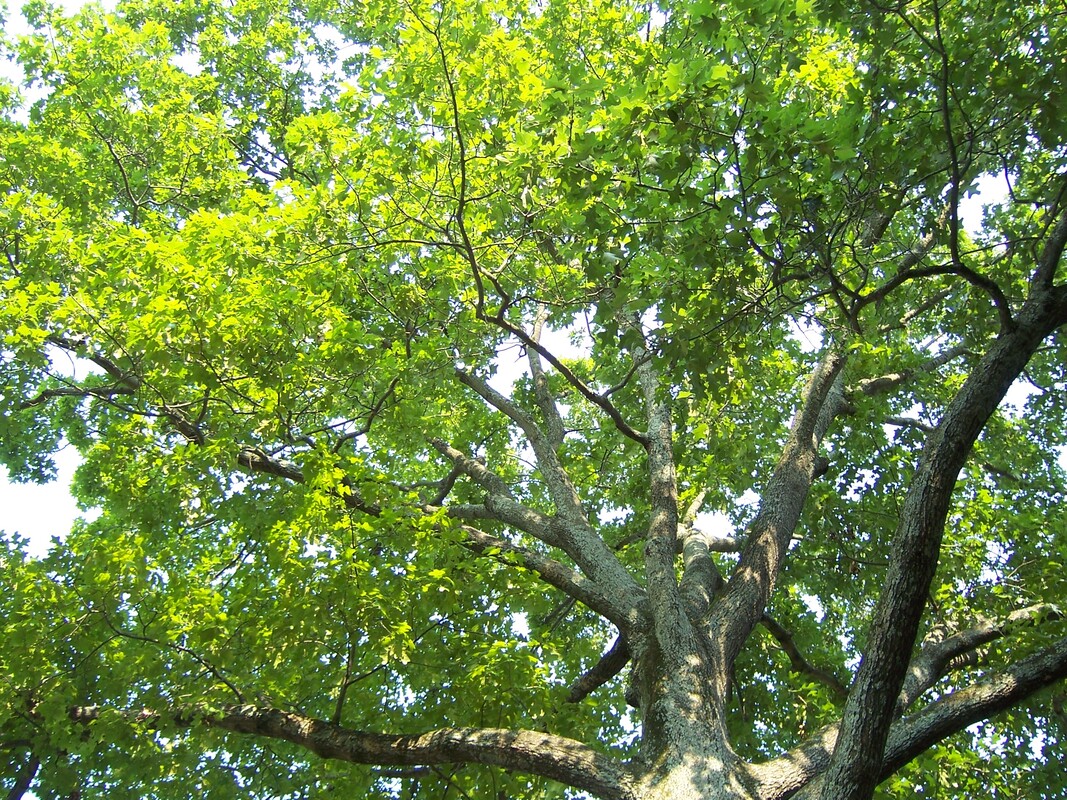Replacing Autumn Olive in Natural Areas
Autumn olive (and the closely-related Russian olive) is an invasive species that arrived in North America with the best intentions; conservation organizations recommended planting it for wildlife. Unfortunately, it now dominates fallow fields, feeding birds berries that are like sugar pills instead of supporting the insect life that those same birds need to raise a nest full of young! As you’re removing these shrubs from natural areas, here are a few native options to consider to help prevent invasive species from re-establishing:
You can also download this page as a printable PDF.
You can also download this page as a printable PDF.
Trees: Establish a new forest to shade-out this sun-loving invader while providing habitat for wildlife.
|
Oaks (Quercus spp.) make fantastic habitat, strong lumber, and are well-adapted to our climate. Red oak (Q. rubra) in particular is very versatile, but is especially susceptible to invasive oak wilt; check to see if there is oak wilt near you, and be careful not to prune the trees during the growing season to help your trees avoid the disease. Oaks with rounded leaves like white oak (Q. alba) and burr oak (Q. macrocarpa) are much less likely to contract oak wilt while growing to shade out autumn olive. The nuts (acorns) of all three species are much beloved by wildlife.
Photo: red pine, Phillip Merrit |
|
Pines (Pinus spp.) are faster growing than oaks and provide shade all year round, and are often good for lumber and dealing with sandy soils. Red pine (P. resinosa) is particularly good at growing in plantations for future harvest, while Michigan’s state tree, white pine (P. strobus), has a softer look and grows nicely in groups or mixed with other species. Tall lone white pines are a favorite nesting spot for hawks and eagles. Jack pine (P. banksiana) gets a bad rap for not growing as straight up as its cousins, but in reality, it provides some of the best habitat for birds and other wildlife. Just be sure to avoid Scots pine (P. sylvestris); it’s invasive!
Photo: white pine, FD Richards |
|
White Spruce (Picea glauca) grows in the neat cone shape indicative of spruce trees and can grow into a beautiful natural screen or snow fence. It can be harvested for lumber, but usually is only cut when mixed with other species. The dense shade it provides means autumn olive isn’t likely to grow beneath it, and its bitter taste makes it a last resort for hungry deer. Its thick branches make great hiding and nesting spots for birds; many game species use it as well.
Photo: nautical2k |
Other Tree Ideas: sugar maple (Acer saccharum), American plum (Prunus canadensis), shagbark hickory (Carya ovata)
Shrubs: Plants that look & grow like autumn olive, establish faster than trees, and provide habitat for birds & other wildlife
|
Buffaloberry/soapberry (Sheperdia canadensis) is in the same family as autumn olive, but it’s native to northwest lower Michigan. Like autumn olive, it has silvery leaves and twigs and bright red fruits. Autumn olive often seem tree-like, but buffaloberry is shorter and more compact. It prefers sunny areas with sandy soil, though it is hardy to many conditions. Birds eat the fruits, and its early spring flowers are especially important to spring pollinators. Humans find buffaloberry fruits very bitter.
Photo: Louis M. Landry |
|
Staghorn sumac (Rhus typhina) is a medium-sized shrub with a unique look—most of its leaves are on the top of the plant, making an umbrella-like top. It spreads through its roots, especially in dry sandy areas, and can help control erosion. Its fall clusters of bright red fruits are highly prized by birds in winter, and its fall foliage is spectacularly scarlet.
Photo: Jordi Chueca |
|
American hazelnut (Corylus americana) bears nuts instead of fleshy fruits, but wildlife of all sorts just go crazy for them! Uneaten nuts (if there are any!) with their attractive “lacy bonnet” of leafy bracts are also less messy than squishy fruits. Hazelnut shrubs are a great replacement for autumn olive, as this native forms clonal patches, keeping soils in place and providing cover for wildlife. This shrub is very tolerant of most sun, shade, and soil conditions, though deer find its young shoots delicious.
Photos: Cranbrook Institute of Science, Superior National Forest |
Other Shrub Ideas: New Jersey tea (Ceanothus americanus), low blueberry (Vaccinium angustifolium), red-osier dogwood (Corunus stolonifera)
Grasses: Our fastest-growing plants, grasses support habitat and help shade out just-starting autumn olive seedlings
|
Little bluestem (Schizachyrium scoparium) is a native grass that stays a little taller than knee-high and grows in neat clumps. In fall, these clumps turn suddenly bornze-red with frost, and the tufts of seeds feed birds in winter. Little bluestem prefers full sun, and, like autumn olive, tolerates drought, rocky soil, and even deer.
Photo: Drew Avery |








